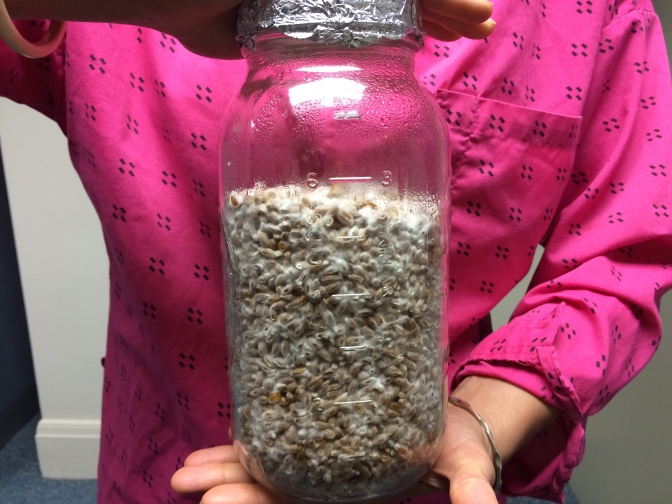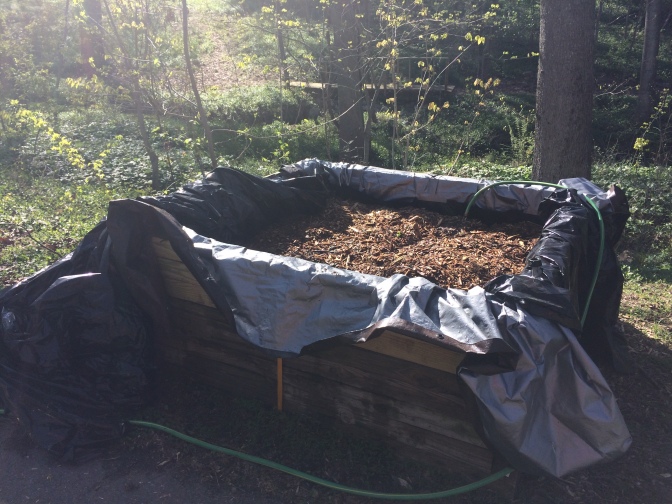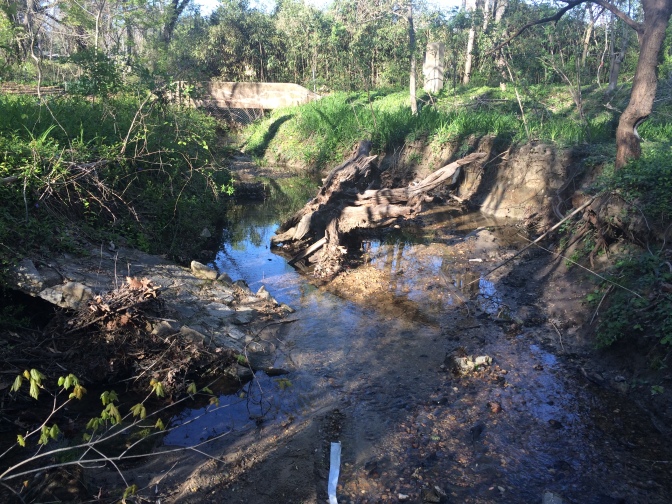The purpose of this research project is to develop a low-cost method to filter harmful bacteria from stormwater by utilizing fungi. This project is based on the research of Paul Stamets, who has shown success in filtering and eliminating Escherichia coli (E. coli ) using the mushroom mycelium of Stropharia rugoso-annulata, grown on wood chips, as a filter. E. coli is a common indicator organism of potential pathogens transmitted from fecal waste.I hope to document the results of this project by publishing in the Virginia Journal of Science as a way to make my procedures public and to begin the use of this technology throughout Virginia.

This project has two parts, a lab “bench scale” study and a field study. Both studies are using the same wood chips that will be inoculated with Stropharia rugoso-annulata grain spawn (see picture above). In order for these wood chips to become colonized with Stropharia rugoso-annulata, we have to pasteurize them! One of the most efficient ways to pasteurize is by drowning the wood chips in water and sealing them so that all the oxygen loving microbes and fungi already existing in the wood chips die off (shown below). Then after about 2 weeks, when we are ready to inoculate the mushroom we want to grow, we’ll drain the wood chips and mix in the Stropharia rugoso-annulata mushroom spawn.

In brief, the lab “bench scale” study involves:
- Creating 33 bucket filters by filling 5-gallon buckets (with holes drilled in the bottom) with myceliated wood chips, 6 being un-myceliated pasteurized wood chips as a control
- Making a “synthetic stormwater” by mixing dog fecal matter into non-chlorinated water, and testing it to determine the amount of E. coli present
- Stacking the bucket filters, with spacers, in towers of 3
- Pouring the “synthetic stormwater” through the top of the filter tower, allowing it to percolate through the myceliated wood chips
- Taking water samples from the water flowing out of each bucket
- Testing the water samples for E. coli
- Repeating the study one week later
The field study involves:
- Filling burlap sacks with myceliated wood chips
- Strategically installing the bags in the stream, so that they can intercept E. coli-ridden water
- Staking down the bags so they can handle storm events
- Monitoring the E. coli levels above and below the filters
Below is the stream where we will be installing mycofiltration bags. This is an unnamed tributary to North Run.

Join me on this mycofiltration journey! I will keep you updated as this project unfolds, and if you want to help, let me know!
Mush love~
This is so interesting! Good luck with the project. I look forward to learning how it works out.
LikeLike
You rock!
LikeLike
YEss!!
Do you have any pictures of the bags in the river?
LikeLike
Thanks Alex!!!
No I do not have pictures of the filters in the stream due to the mycelium dying from too much heat, before they were to be installed. I will elaborate more details on an upcoming blog post!
LikeLike
Awesome! I’ll stay tuned!
LikeLike